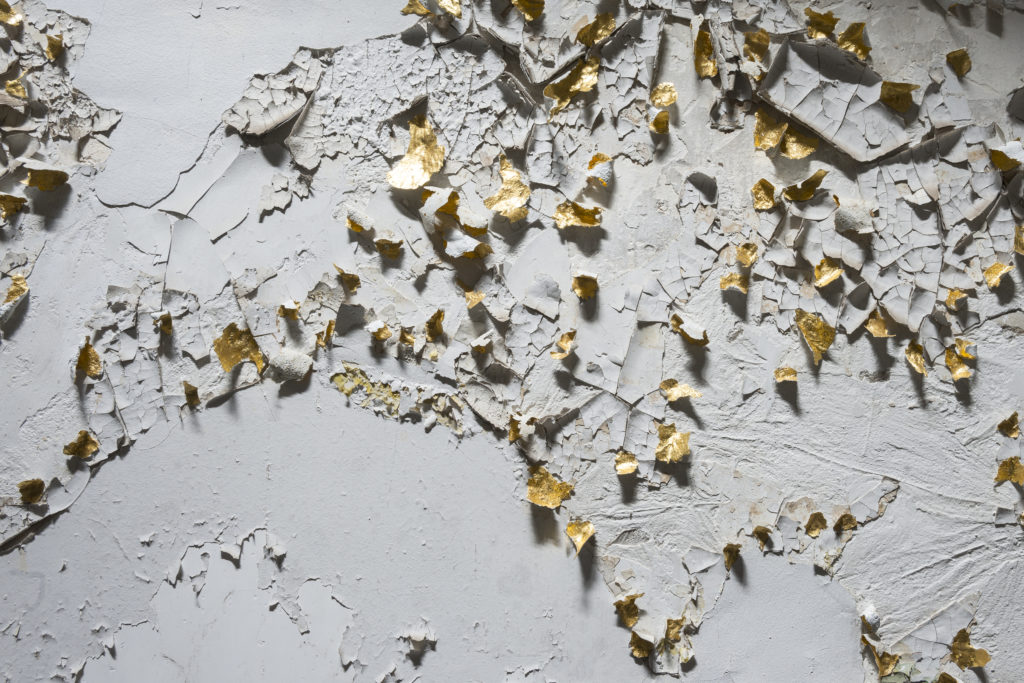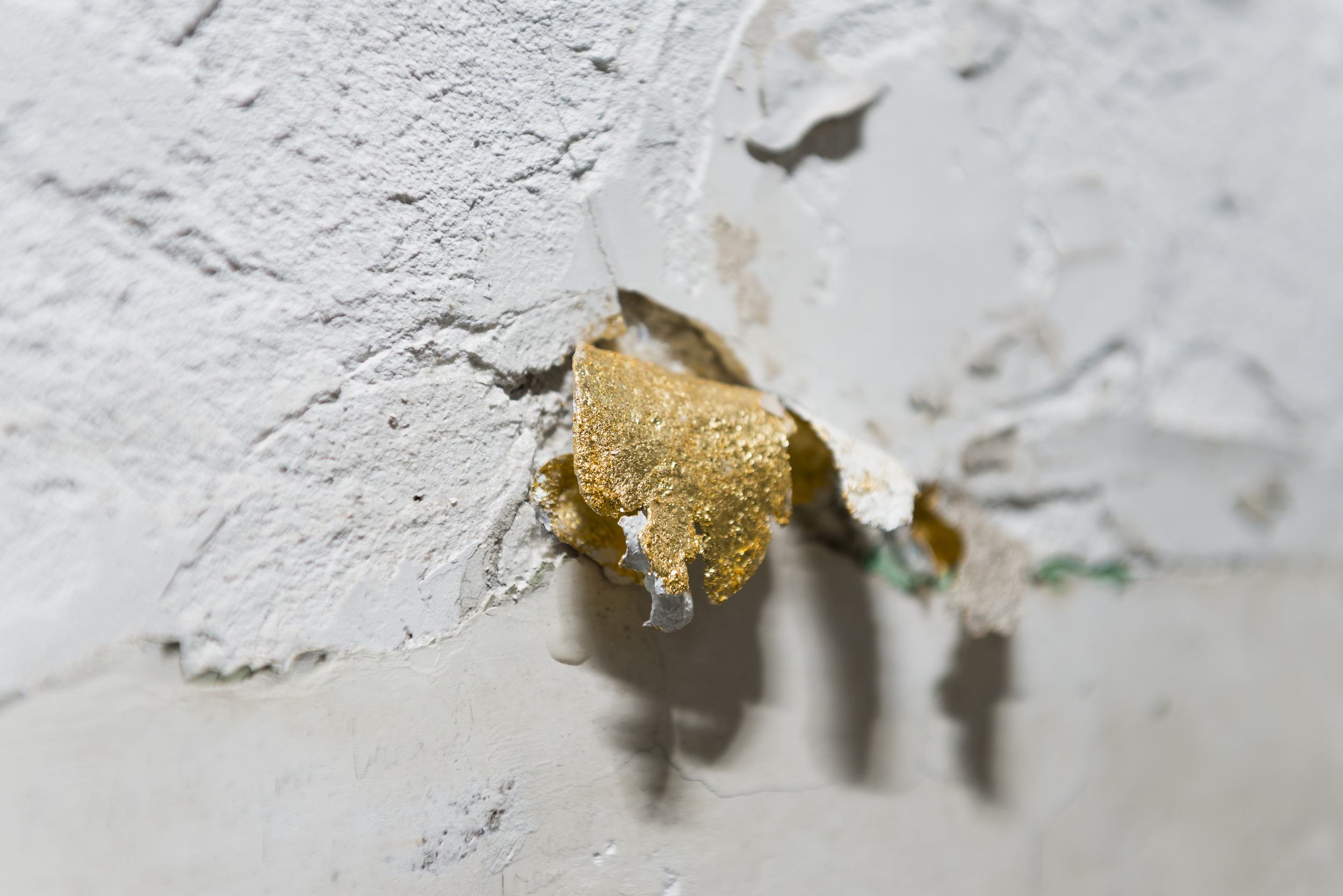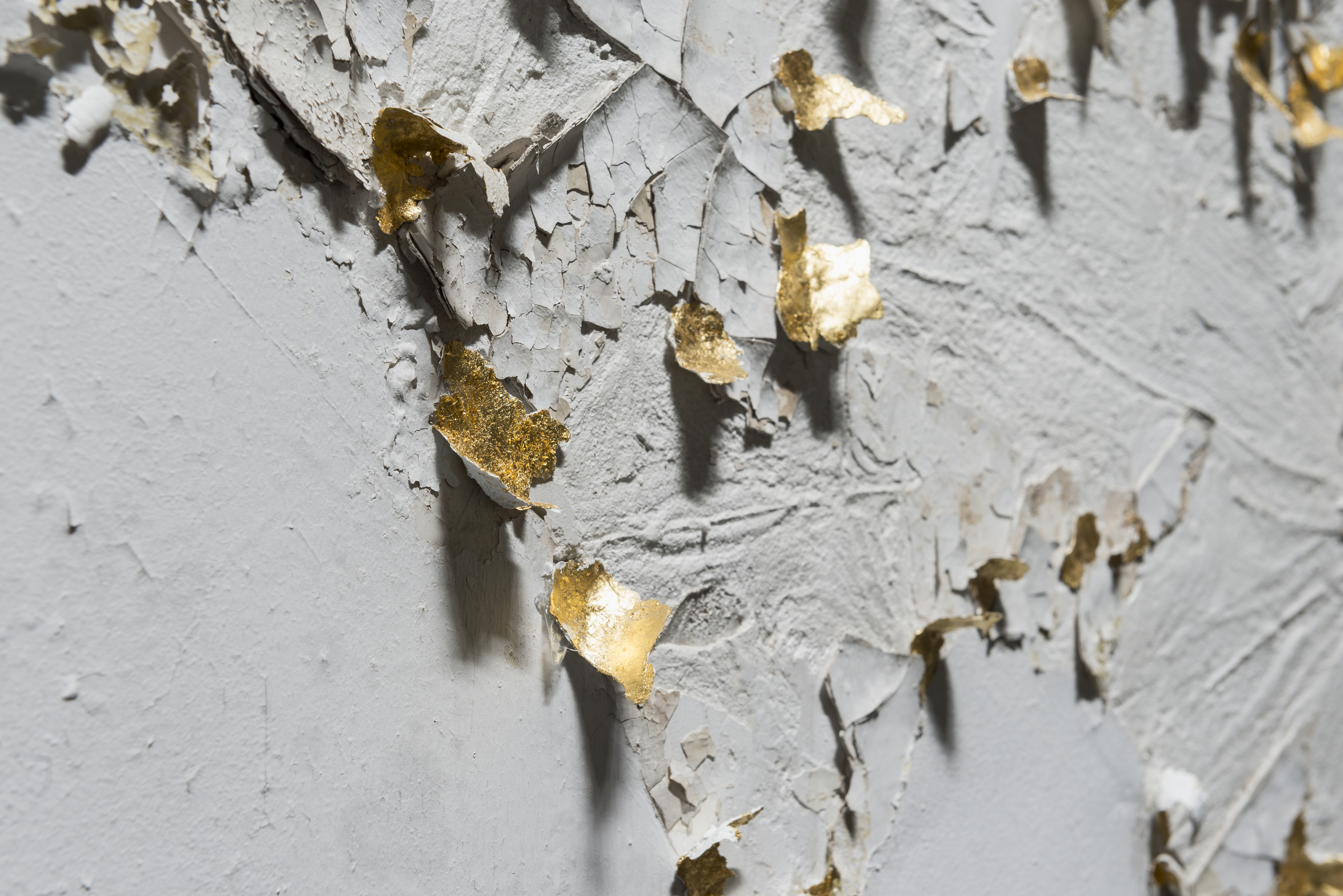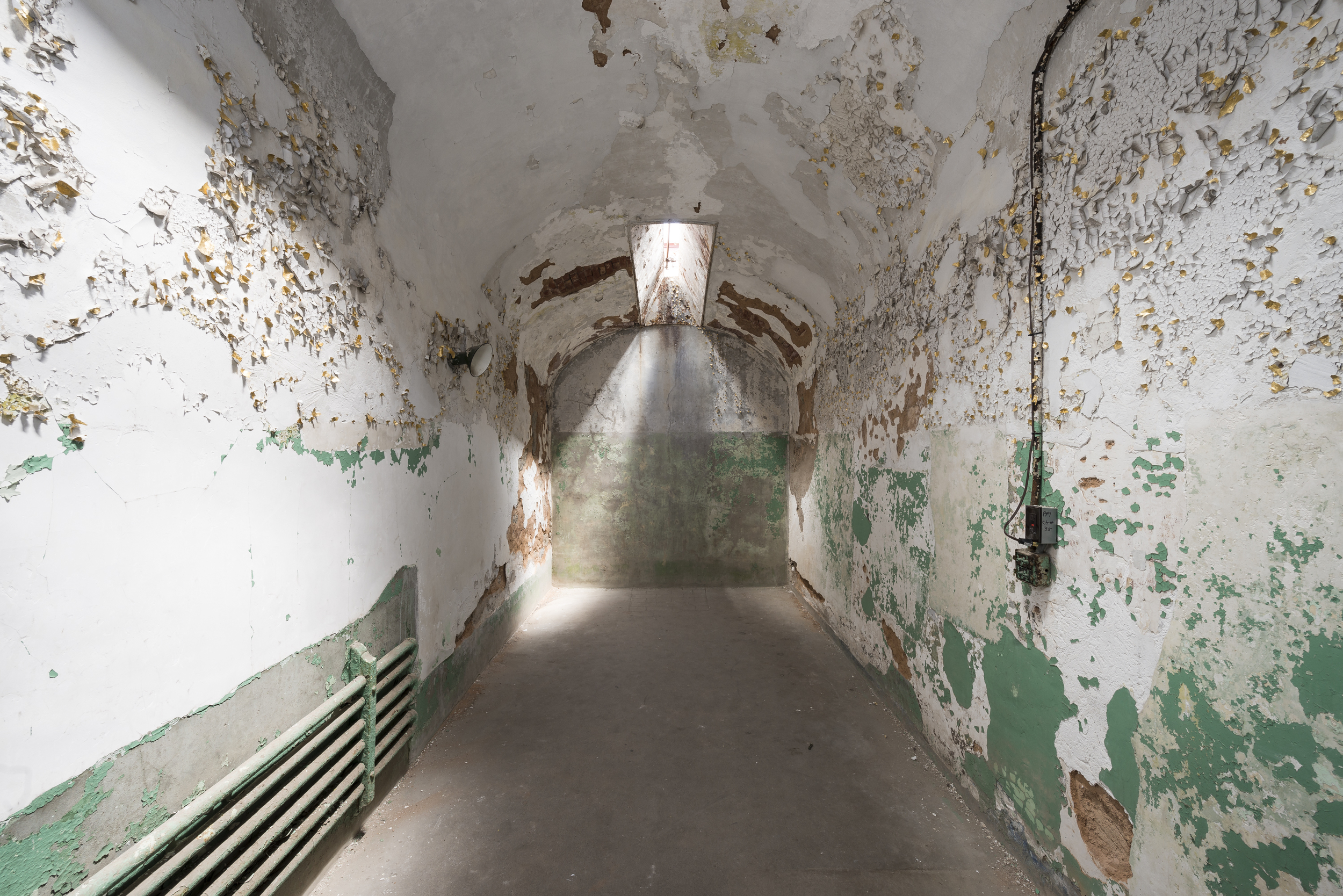
Can the dreariest place be made into something that inspires? Ruth Scott Blackson, a book restorer and binder by day and an installation artist by night, believes it can. In her 2015 piece, No Trace Without Resistance, she gilded flaking white paint chips on the walls of a cell in the former Eastern State Penitentiary in Philadelphia, which closed in 1971. “Wouldn’t it be amazing if you walked into a cell and you had this glittering constellation of paint fragments where the light did certain things to the cell?” she asked.
Blackson was careful to ensure that every mark she made could be removed without leaving a trace, since the site is a National Historic Landmark. “I couldn’t gold leaf directly onto the wall, so I had to think of another way to do it,” she said. “I worked with a restorer there to identify the right glue and paint fragments to use.” Every piece of gold leaf had to be applied with delicate precision, Blackson’s hands moving slowly across the room. The project took two weeks to complete.
Exposed to light, the room seemed to breathe and flutter like a million golden butterflies. Blackson had achieved her goal, but the effect was fleeting: just as she had spent countless hours installing the piece, she then had to take it down, flake by flake. “The de-install took only one day,” she said, but the public’s enthusiastic response to the piece made it all worthwhile.




